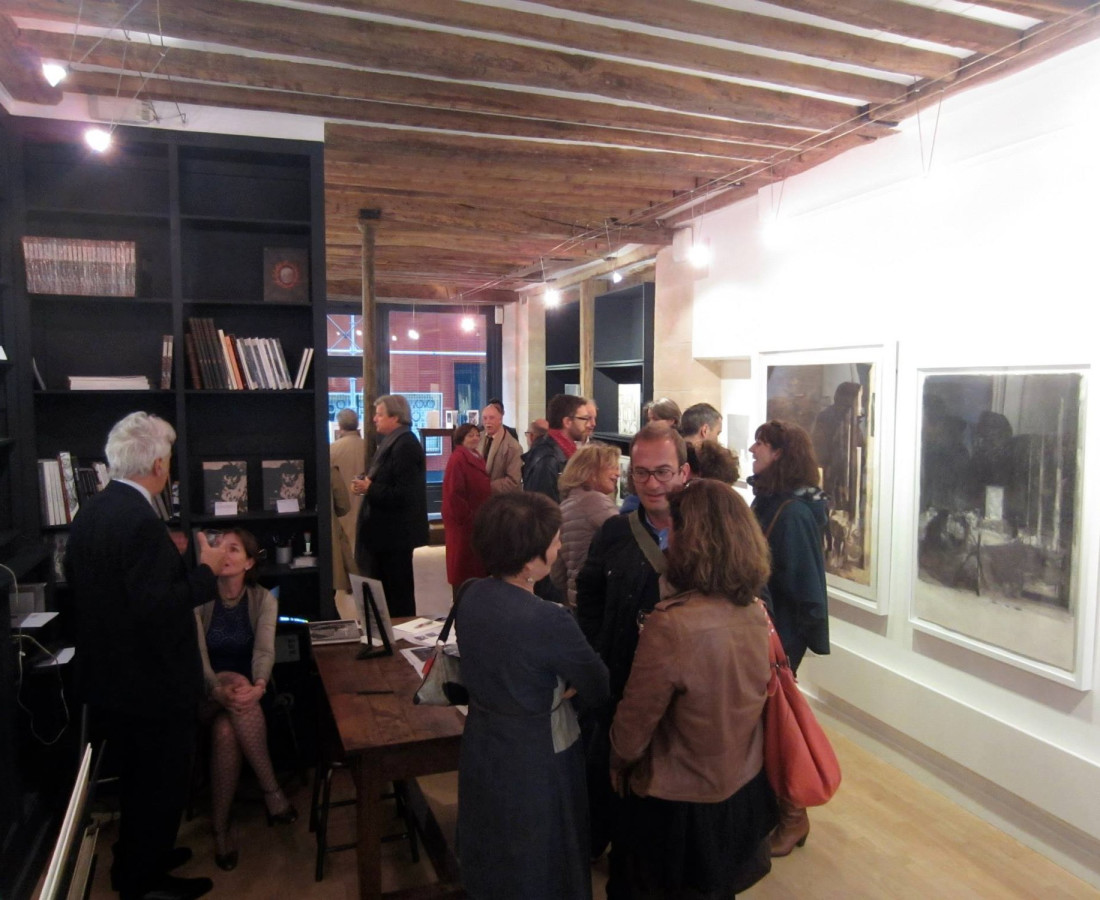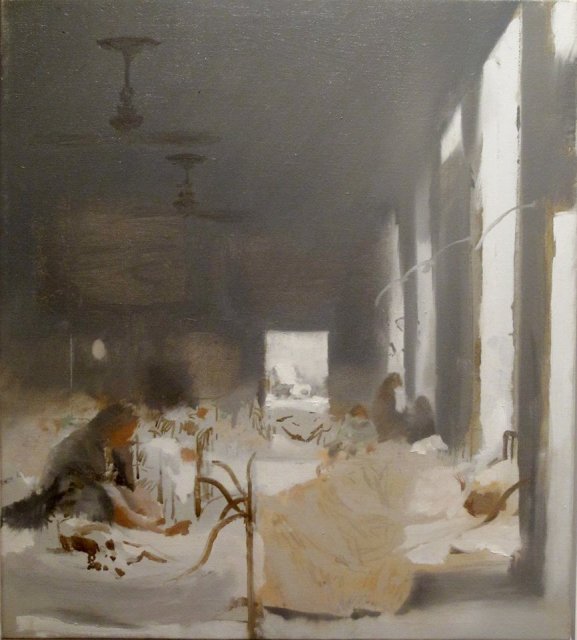Simon Edmondson on his work Hospital-Palace:
My idea was to recreate faithfully on canvas the space of the Prince's quarters that we can see in Velázquez's Las Meninas, as if the fire had never occurred, and that the Real Alcázar de Madrid had survived into modern times, being converted into some kind of hospital or refuge. In my studio, I physically recreated this part or the Real Alcázar and simulated its lightning. Based on the surviving 17th century architectural plans kept in the Vatican library, I produced my own corresponding plans of the main room of these quarters, known at the time as the cuarto bajo del Principe. By perspective and mathematically calculated projection, I was able to locate my eye level, picture plane, view point and vanishing point, in exact relation to those employed by Velázquez. Comparing his work with the old plans, strongly suggests that he also employed some mechanical or mathematical means of rendition in the early stages of his composition. By making my version's cardinal points those of a taller viewer looking over the left-hand shoulder of Velázquez's viewer, everything in my work is seen from a slightly different angle, and this has obliged me to make my own parallel path.
My parallel version is undertaken under very similar materiel and technical conditions, although I have not referred very much to Las Meninas except for the implied presence of shutters and the ceiling roses which do not appear in the 17th century plans. I have closely studied the Prado's own restoration report, written by Manuela Mena (Boletin des Museo des Prado, Tome VI, Número 14, Mayo-Augusto 1984), and its revelations about the line, preparation and pigments used. The execution of full and partial studies and drawings has played a vital part in this work's evolution.
I have rearranged and substituted under very similar material (including the dog) with inmates and custodians of the refuge or hospital which the Real Alcázar de Madrid has become in my version. I have removed all the original furnishings, but architectural elements remain in place.
Above all, I wanted to avoid the speculative and theoretical discussions which Velázquez's work continues to raise trying instead to emphasize the genuine humanity of his group of figures, a view on the inevitable fragility and eventuality that envelopes the human condition. A real moment of time portrayed in an existing and documented space. This is where the richest and most honest artistic intention is to be found, something that is not always recognized about this great work but which deserves to be more acknowledged. In producing my own painting I was, in fact, finding out more about Velázquez's private quest in this private masterpiece.
Exhibit in association with Ditesheim & Maffei Fine Art, Neuchâtel



